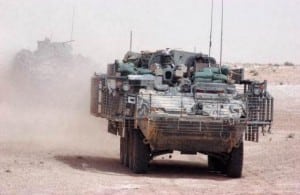
House lawmakers are interested in the potential for the Army to explore vehicle autonomy capabilities with its Stryker fleet, calling for a report on the feasibility and costs associated with pursuing the technology. The House Armed Services Tactical and Air and Land Forces Subcommittee included the Stryker autonomy directive in its markup for the fiscal year 2023 National Defense Authorization Act as part of the panel’s interest in how autonomous or optionally-manned capabilities can be applied to current platforms, and…

 By
By 











